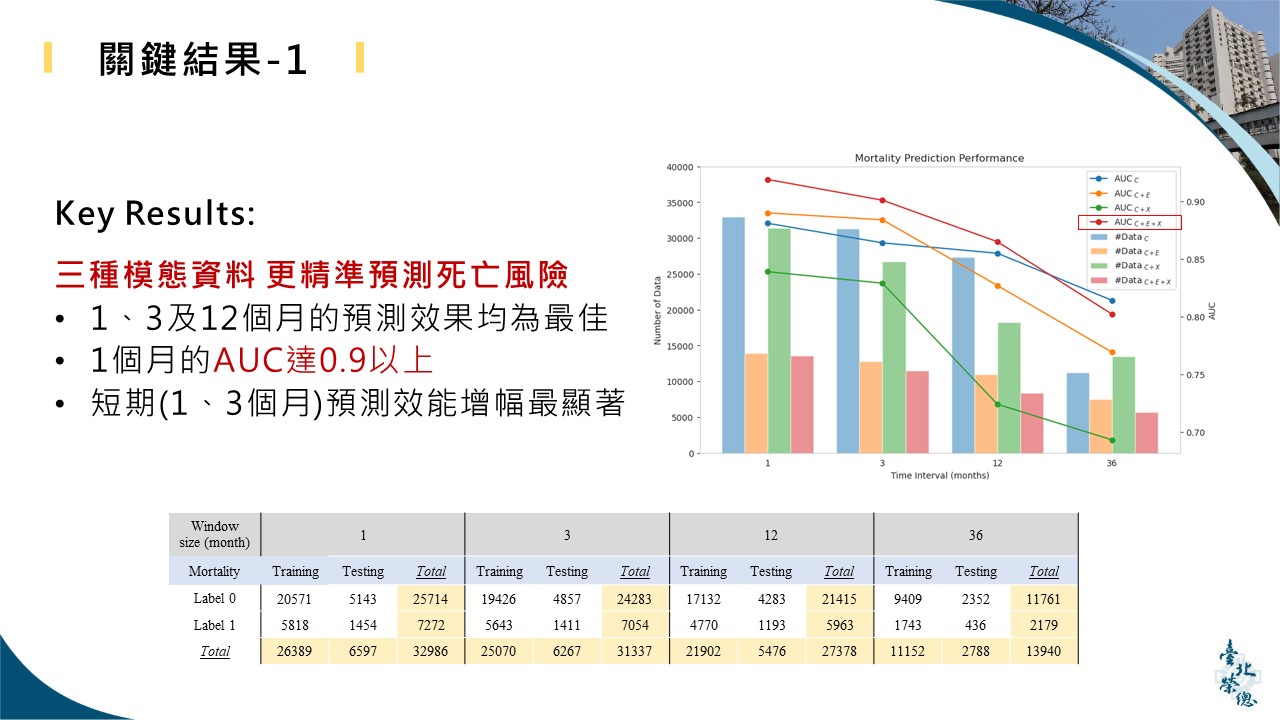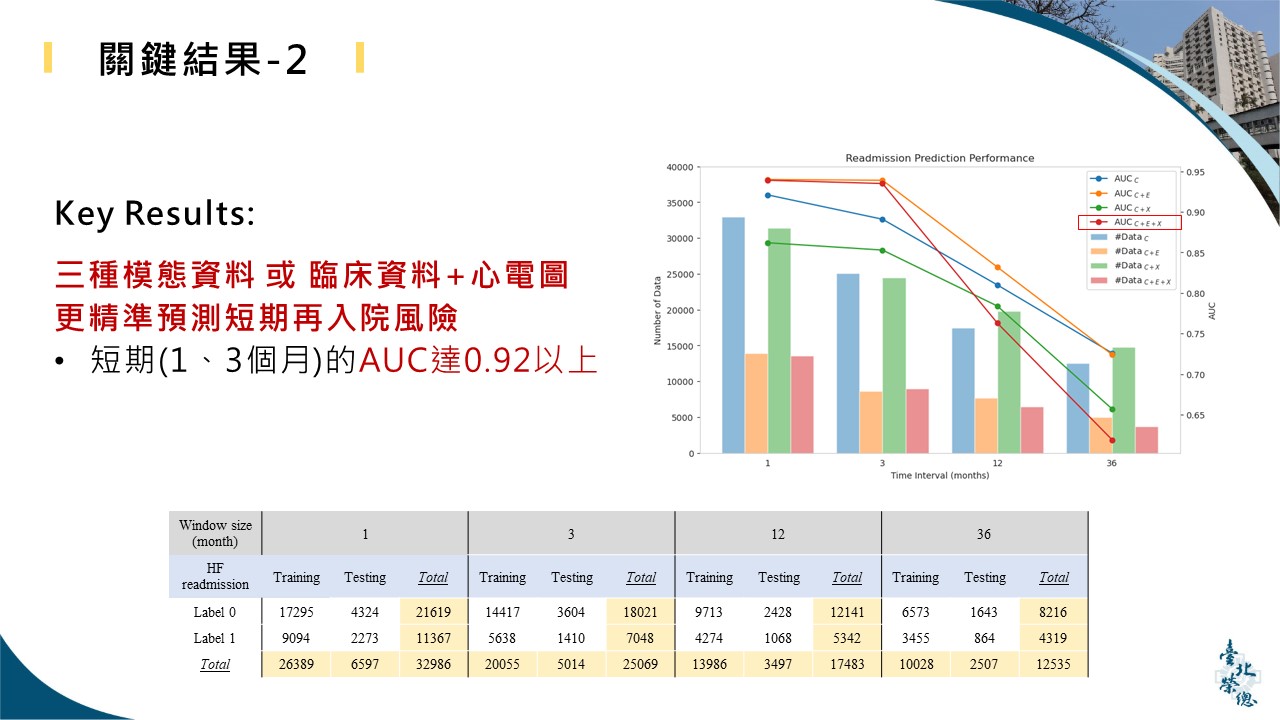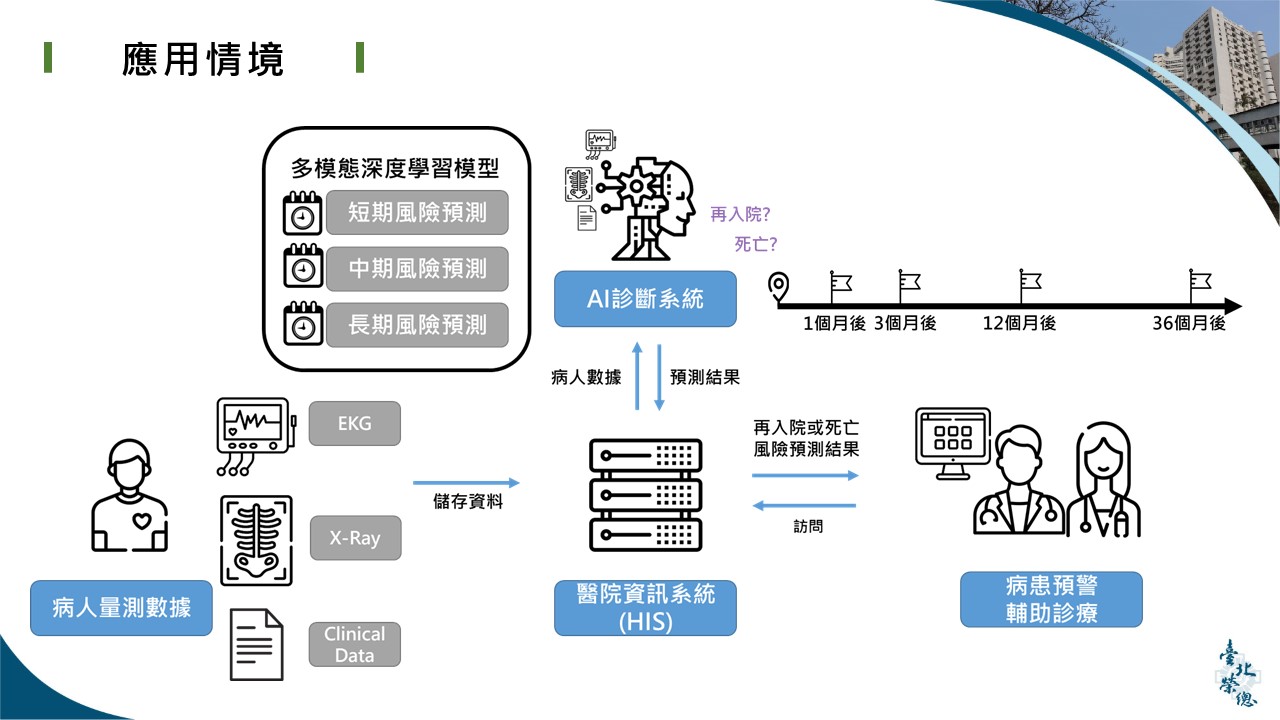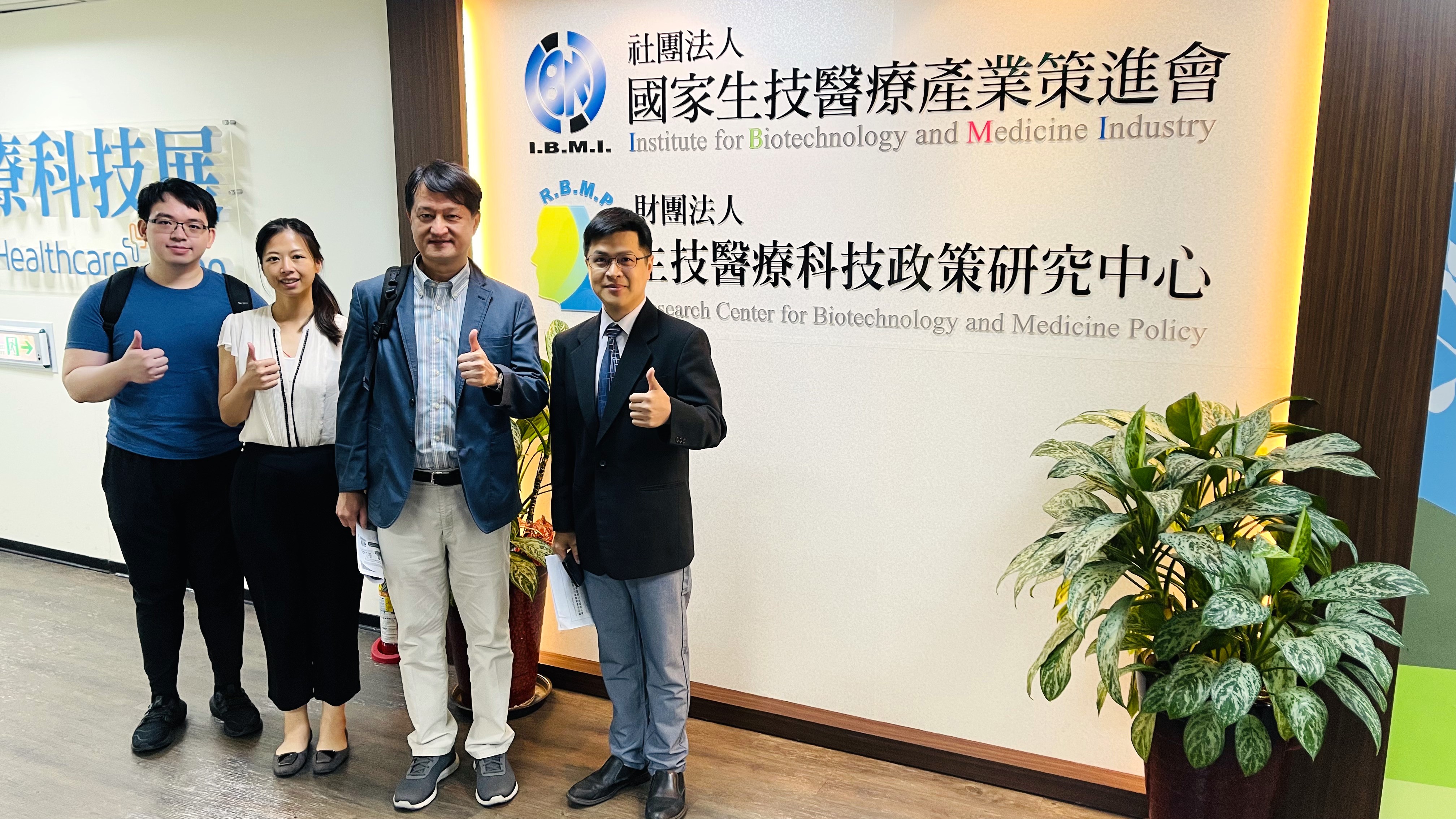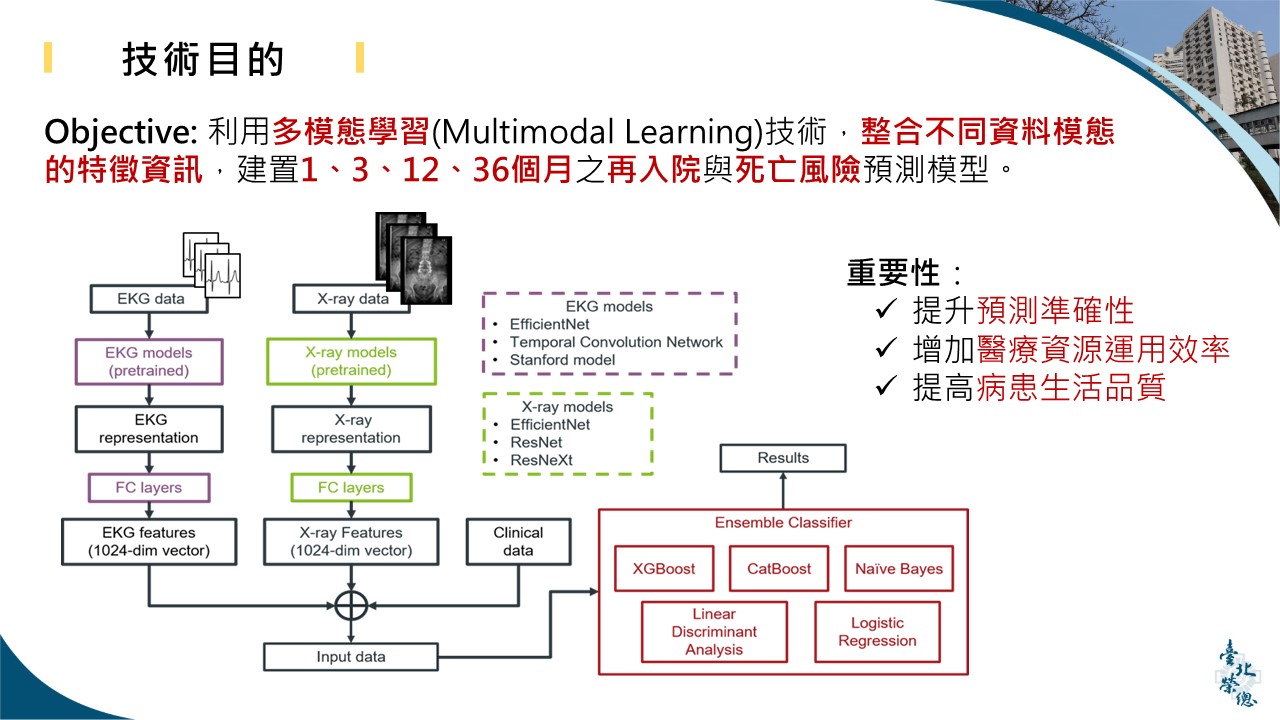鄭浩民、曾新穆、張瑋倫
本研究開發基於多模態學習方法,利用臨床數據、心電圖訊號和X光影像預測心衰患者1、3、12、36個月的再入院和死亡風險。針對再入院,結合三種模態資料預測1、3個月風險的模型AUC皆達0.9以上;針對死亡,相較於單一模態資料的模型,結合三種模態資料預測1、3、12個月風險的模型表現均較佳,尤其1個月的模型AUC達0.9以上。本研究結果顯示,多模態學習方法在預測心衰患者再入院和死亡風險的有效性。此外,結合三種模態資料能增強模型的預測能力,為心衰病人管理的風險評估提供有價值的幫助,讓智慧醫療有效的運用到實際場域。
3. 本研究特別設計和訓練模型,使其在數據缺失時仍可進行預測,進一步強化實際應用的彈性及穩健性。
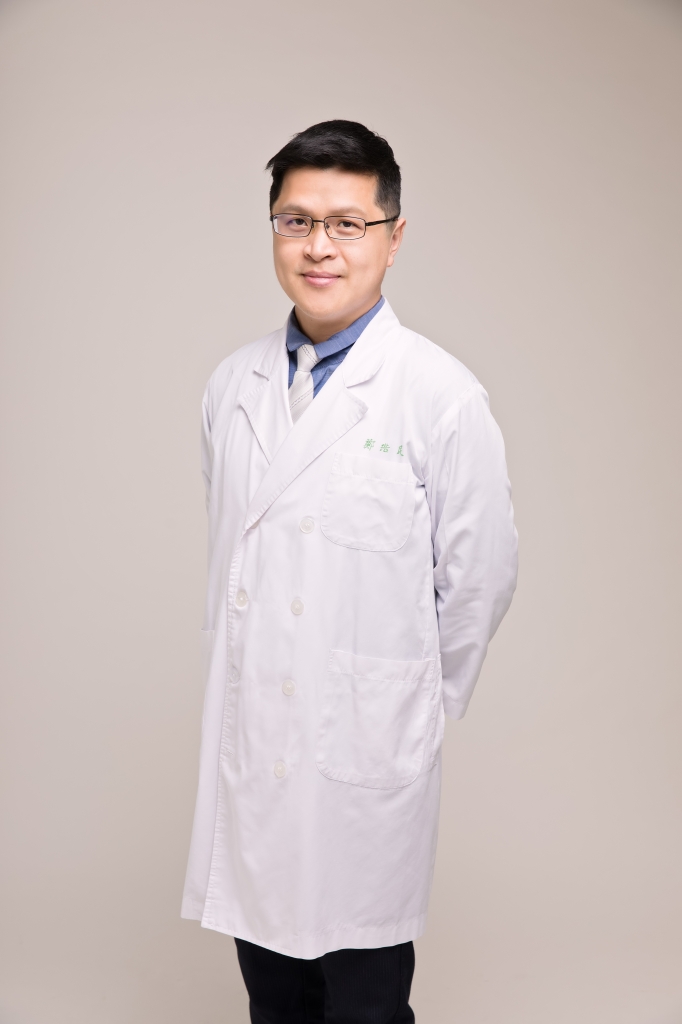
|
鄭浩民 |
|
|
學歷 |
Doctorate degree in Medicine |
|
現職 |
臺北榮民總醫院教學部教師培育科主任/心臟內科主治醫師 陽明交通大學醫學院內科學系教授/公共衛生研究所教授/衛生福利研究所合聘教授 台灣實證醫學學會秘書長 台灣高血壓學會理事 台灣皮質醛酮症學會常務理事 |
|
經歷 |
1) Professor Cheng has been a cardiologist for more than 15 years with the sub-speciality of interventional cardiology and cardiovascular hemodynamics. 2) As a professor in National Yang Ming Chiao Tung University, He has been granted the awards of excellence in Clinical and Internship Teaching numerous times. 3) Professor Cheng is current the director of Division of Faculty Development, Taipei Veterans General Hospital and was the immediate past director of Centre for Evidence-based Medicine in Taipei Veterans General Hospital. 4) His research has been focusing on cardiovascular hemodynamics, hypertension management, and evidence-based health care with more than 250 articles published in peer-reviewed journals and several patents in US, Japan, and Taiwan. 5) Professor Cheng is an editor in Systematic Reviews, BMC Cardiovascular Disorders, JBI evidence synthesis, Frontiers in Cardiovascular Medicine and has been involved in editorial and peer-review work of many international SCI listed journals. 6) Professor Cheng has developed the innovative techniques relating to cardiovascular hemodynamics and endeavoured to facilitate the technology transfer from research to industrialisation. |
Copyright © 2012 - 2025 Research Center for Biotechnology and Medicine Policy (RBMP). All Rights Reserved

